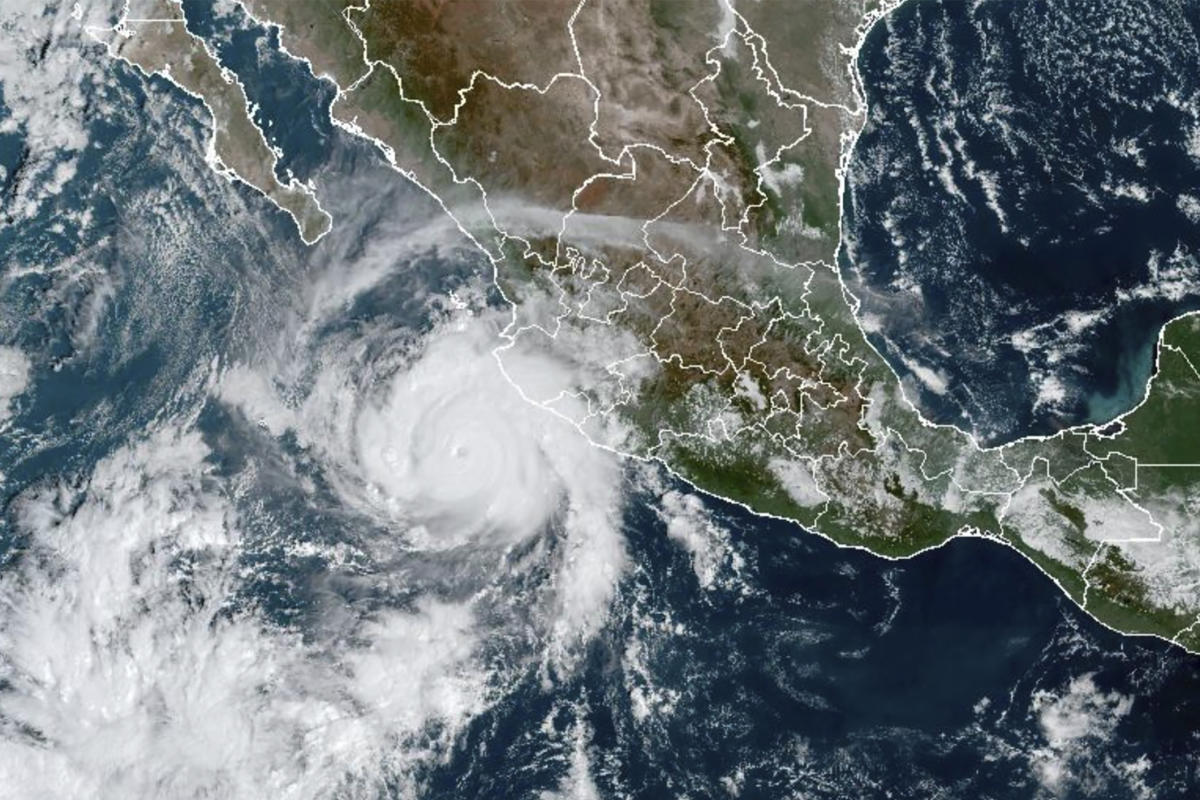
MEXICO CITY (AP) — Hurricane Roslyn slammed into a sparsely populated stretch of Mexico’s Pacific coast between the resorts of Puerto Vallarta and Mazatlan Sunday morning, then declined to tropical storm force and quickly moved inland.
By Sunday morning, Roslyn had winds of 70 mph (110 kph), down from its peak of 130 mph. The U.S. National Hurricane Center said Roslyn was about 55 miles (90 kms) south-southeast of the northern city of Durango.
The hurricane was moving north-northeast at 20 miles per hour (31 kph) and was expected to lose strength further as it moves further inland. The center expects Roslyn could become a tropical depression before reaching Texas.
While it missed a direct hit, Roslyn brought heavy rain and high waves to Puerto Vallarta, where ocean surges lashed the beachside promenade.
Roslyn came ashore in Nayarit state, in roughly the same area where Hurricane Orlene made landfall Oct. 3.
The hurricane made landfall around the village of Santa Cruz, near the fishing village of San Blas, about 90 miles (150 kilometers) north of Puerto Vallarta.
A resident reached by telephone in the town of San Blas reported no damage of any significance there.
In Tepic, the Nayarit state capital, Roslyn blew down trees and flooded some streets; authorities asked residents to avoid going out Sunday, as crews worked to clear a landslide that had blocked a local highway.
The Federal Electricity Commission reported that over 150,000 homes had lost power as a result of the storm, and that by midday Sunday, service had been restored to about one-third of those customers.
Meanwhile, beachside eateries in Puerto Vallarta where tourists had lunched unconcerned Saturday were abandoned Sunday morning, and at some the waves had carried away railings and small thatched structures that normally keep the sun off diners.
The head of the state civil defense office for the Puerto Vallarta area, Adrián Bobadilla, said authorities were patrolling the area, but had not yet seen any major damage.
“The biggest effect was from the waves, on some of the beachside infrastructure,” said Bobadilla. “We did not have any significant damage.”
The state civil defense office posted video of officers escorting a large sea turtle back to the water, after it had been thrown up on the beach by the large waves.
The National Water Commission said rains from Roslyn could cause mudslides and flooding and the U.S. hurricane center warned that heavy rains could cause flash flooding and landslides over the rugged terrain inland.




